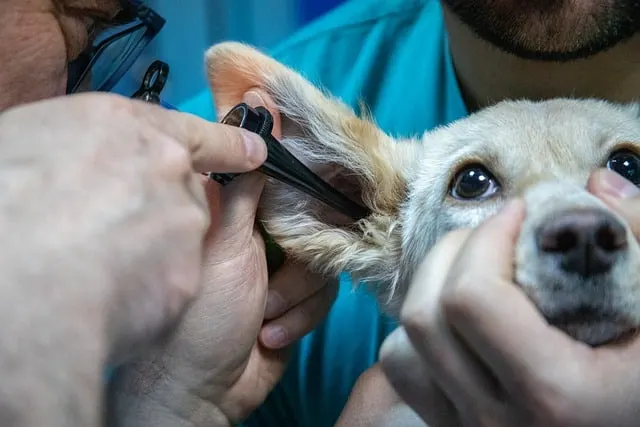
As a dog owner, flea and tick control are essential to responsible pet care. Not only are these parasites irritating and uncomfortable for our furry friends, but they can also carry dangerous diseases.
However, with so many available products and methods, it can be overwhelming to know which options are safe and effective for your dog. Here are six tips and tricks from veterinary professionals to help you navigate the world of flea and tick control for dogs.
1. Check Your Dog for Fleas and Ticks Regularly
Regularly checking your dog for fleas and ticks is important in keeping them safe and healthy. It’s best to thoroughly check at least once weekly, especially during peak flea and tick season.
ASPCA states fleas have a lifespan of between 13 and 12 days, during which they can breed countless offspring. Thus, it is important to check your dog for fleas. You can do this by parting their fur and looking for small, dark brown insects moving around.
You may also notice flea dirt, like small black specks and feces. To check for ticks, run your hands over your dog’s body, paying particular attention to the head, neck, ears, and paws. Ticks are often brown or black and can vary in size from a pinhead to a grape.
If you find fleas or ticks on your dog, taking action immediately is important. Be sure to disinfect the bite site and watch your dog for any signs of illness, as ticks can transmit serious diseases like Lyme disease and Rocky Mountain spotted fever.
2. Use a Preventive Medication
Preventive medication is an effective way to protect your dog from fleas and ticks. These medications come in various forms, including pills, topical treatments, and collars. They work by either repelling parasites or killing them once they come into contact with your dog’s skin.
Consulting with your veterinarian is crucial when selecting a preventive medication that suits your dog’s requirements. One commonly used option is Frontline Plus for dogs, which is a topical treatment that can eradicate fleas, ticks, and their eggs and larvae for up to 30 days.
Administering Frontline Plus is hassle-free, and it can offer prolonged protection against fleas and ticks. The medication can be applied by parting your dog’s fur between its shoulder blades and directly administering it to the skin.
To ensure the medication’s efficacy, it is important to adhere to the instructions carefully and avoid handling it with your bare hands. Once you have chosen the appropriate preventive medication, it is crucial to use it as per the instructions provided.
Once you’ve chosen a preventive medication, it’s important to use it as directed. It means applying or administering the medication at the recommended intervals and using the appropriate dosage for your dog’s weight.
3. Keep Your Dog’s Environment Clean
Another critical step in avoiding a flea and tick infestation in your dog is maintaining a clean environment for him. You have to be careful about ticks, especially, as they can hide near the corners and easily get out of sight.
According to AVMA, a mature female tick is so dangerous that it can consume 100 times her weight in blood. Animals can contract deadly infectious illnesses from them, including Lyme disease and others. Therefore, regularly cleaning your home and yard can help reduce the risk of parasites taking hold.
To begin, make it a routine to vacuum your residence frequently, focusing particularly on regions where your dog spends the majority of its time. It will help remove any flea eggs or larvae that may be hiding in carpets or furniture. Be sure to dispose of the vacuum bag or empty the canister outside to prevent fleas or ticks from escaping back into your home.
Washing your dog’s bedding and toys regularly can help keep its environment clean. Use hot water and a pet-safe detergent to kill any parasites that may be lurking.
4. Groom Your Dog Regularly
Brushing your dog’s coat regularly not only helps distribute natural oils and prevent matting, but it can also help you spot any fleas or ticks hiding in your dog’s fur.
When grooming your dog, brush them thoroughly, paying close attention to areas where fleas and ticks tend to hide, such as the ears, neck, and tail. It can help remove any parasites that may be present and prevent them from taking hold.
If you find fleas or ticks during grooming, use a flea comb to remove them and drop them into a bowl of soapy water to kill them. Be sure to disinfect the area where you found the parasites to prevent re-infestation.
5. Avoid High-Risk Areas
Certain environments, such as wooded areas or fields with tall grass, may be more prone to fleas and ticks than others. Stick to well-maintained paths and avoid areas with high grass or brush when walking or hiking with your dog. If you do venture into these areas, be sure to check your dog thoroughly for parasites afterward.
Avoiding contact with other dogs or animals that may be infested with fleas or ticks can also help reduce the risk of infestation. Be cautious when taking your dog to dog parks or other areas where they may come into contact with other animals.
6. Monitor Your Dog for Signs of Illness
Even with preventative measures in place, it’s important to monitor your dog for signs of illness related to flea and tick infestations. Fever, fatigue, decreased appetite, and skin irritation are typical indications of diseases caused by fleas and ticks. If any of these indications manifest in your dog, it is critical to seek veterinary attention without delay.
Prompt identification and therapy can impede disease transmission and decrease its effects on your dog’s well-being. Besides scheduling regular veterinary appointments, you can also keep a check on your dog’s health at home by taking certain measures.
In addition to regular check-ups with your veterinarian, there are steps you can take at home to monitor your dog’s health. For example, pay attention to changes in your dog’s behavior or appetite, and inspect their skin and coat regularly for signs of parasites or irritation.
Maintaining the Good Health of Your Dog Requires Effective Flea and Tick Management
Flea and tick control is important to keeping your dog healthy and happy. You need to be aware of all the aspects and necessary products needed to be available if your dog has them.
It is due to the growth in pet health and hygiene awareness among pet owners. As a result, from 2022 to 2031, the market for flea and tick products is anticipated to expand at a CAGR of 10.1%. By the end of 2031, it may have a worth of USD 16.4 billion, according to Transparency Market research.
You may assist in avoiding infestations and shield your animal buddy from parasites’ negative effects by heeding these six pieces of advice from veterinary experts. As a result, you can help ensure your dog stays healthy and comfortable all year round.
- Sagittarius Man & Gemini Woman Love and Sex Compatibility - January 31, 2024
- Taurus Ascendant Rising Personality Traits in Men (Guide) - January 31, 2024
- How to Seduce and Attract a Sagittarius Man (Seduction Tips) - January 31, 2024
